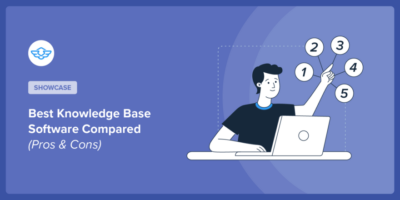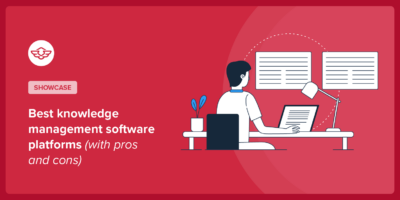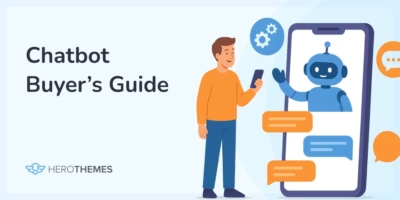Rule-Based Chatbots: A Beginner’s Guide with Examples
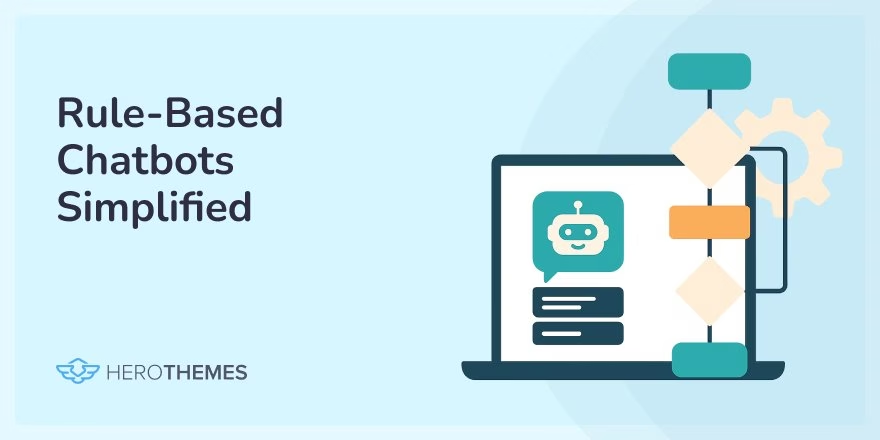
In this beginner-friendly guide, I’ll demystify rule-based chatbots. What they are, how they work, where they shine (and struggle), and much more.
By the end, you’ll know exactly when a simple rules-driven bot is all you need, and when it might be time to bring in AI. (Spoiler: sometimes keeping it simple wins.)
So, let’s start!
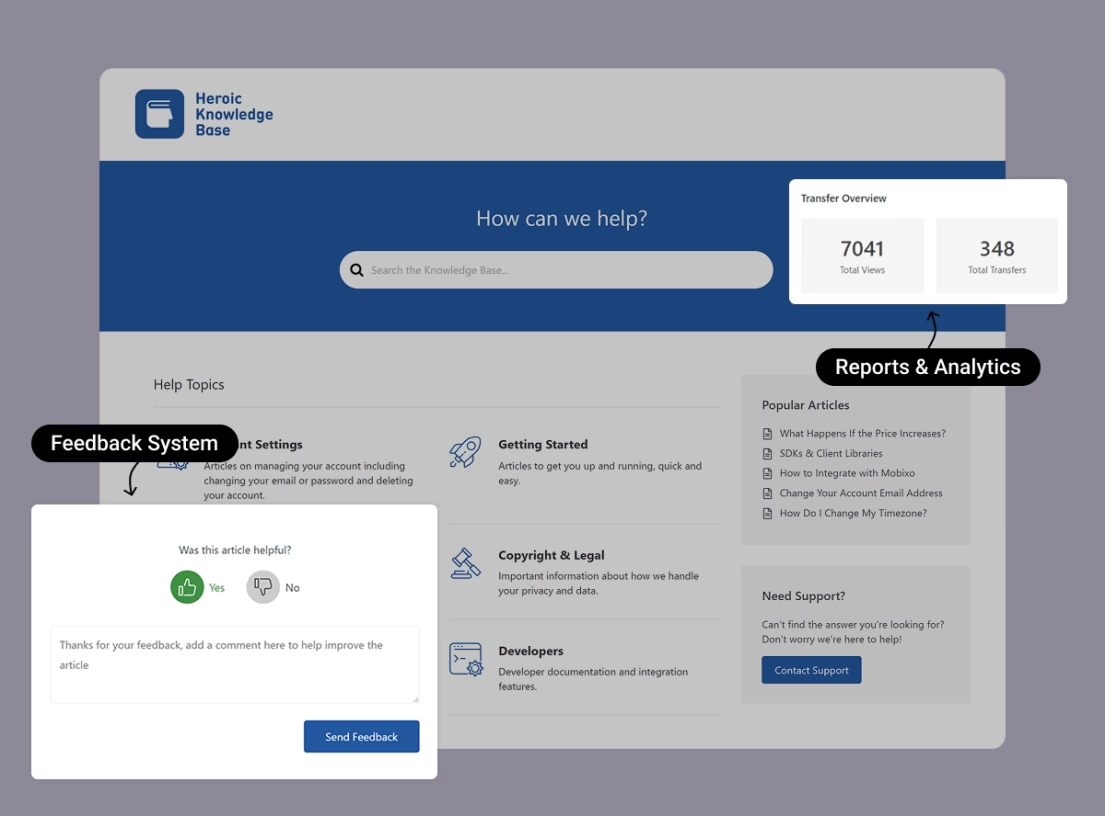
Heroic Knowledge Base + AI Assistant
Create a beautifully designed, searchable knowledge base in minutes.
In This Guide
What Is Rule-Based Chatbot?
A rule-based chatbot is actually pretty non-intelligent in the traditional sense—it doesn’t learn or improvise. Instead, it follows a set of predefined rules or a script to decide how to respond.
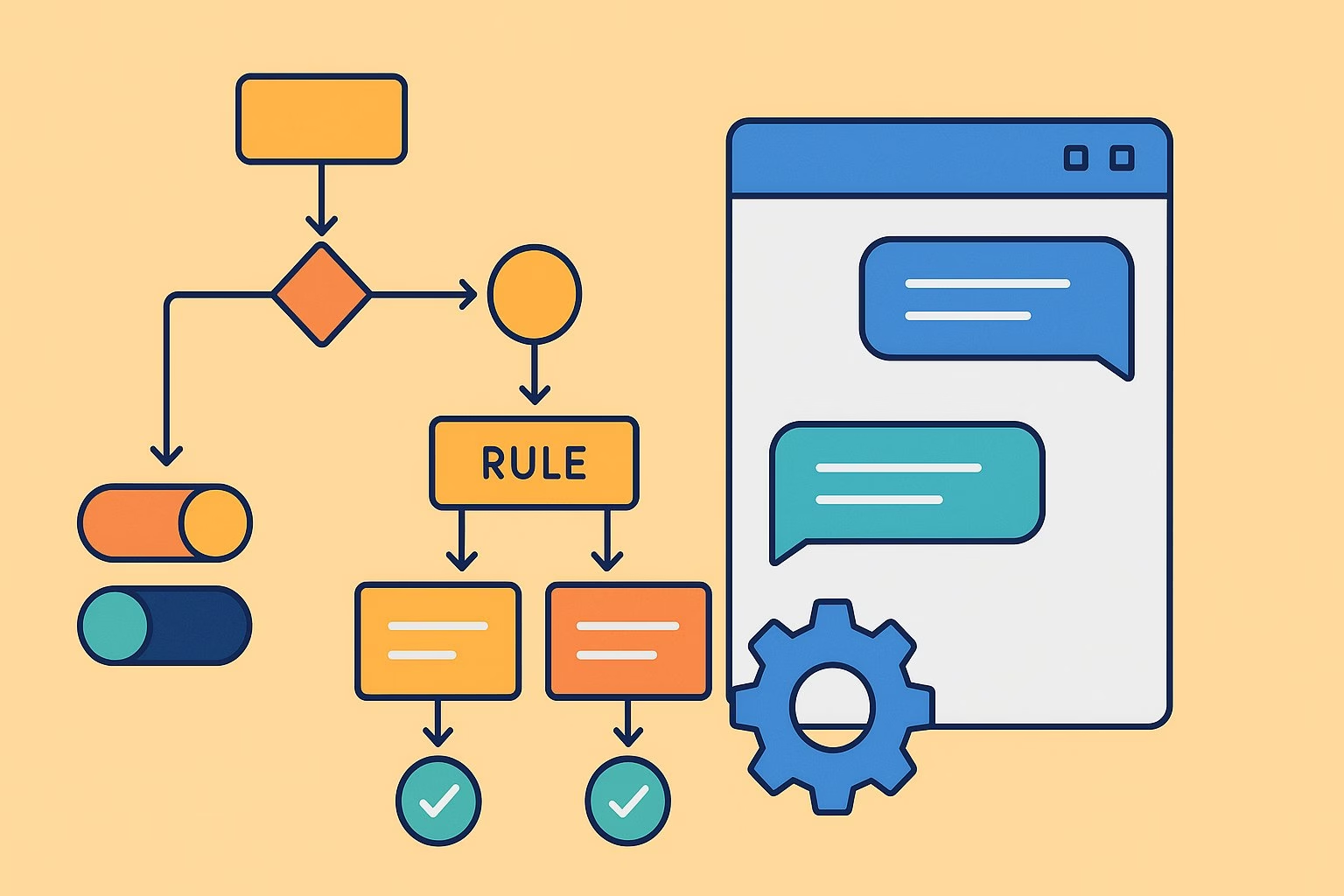
It’s more like an interactive flowchart or decision tree that guides the conversation. Every path is mapped out in advance by a human (usually a conversation designer or support manager).
Rule-based bot can only handle scenarios it was explicitly programmed for. If you ask something unexpected, it will either give a generic fallback response or fail to understand.
It is also sometimes called decision-tree bots or scripted bots for this reason.
Are Rule-Based Chatbots “AI”?
Short answer: no. At least not the kind of AI people mean today.
Rule-based bots don’t use machine learning or natural language processing the way AI chatbots do.
Rule-based chatbots can use a simple keyword matching (if the user’s message contains “price”, respond with pricing info) or present buttons for the user to click. But they are not learning from data or understanding language context beyond the rules given.
So, calling a rule-based bot “AI” is a bit of a misnomer. It’s automation, yes, but it’s not artificial intelligence in the modern sense.
How Do Rule-Based Chatbots Work?
A rule-based bot can be programmed to catch the word, such as “order,” and then follow a script. “Sure, I can help with your order status. What’s your order number?”
Then, based on the user’s input, it gives a pre-written response or maybe a link to track the order.
Every step is a predetermined rule: if the user says X, bot does Y. Essentially a flowchart of conversation.
Many rule-based chatbot builders provide a visual “drag-and-drop” flow editor where you create nodes for each question/answer and connect them with arrows.
Some key elements of rule-based chatbot working:
- Predefined triggers: The bot is programmed to listen for certain keywords or phrases, or to respond at certain points.
- If/Then logic: The backbone is conditional logic where each step is explicitly defined.
- No NLP (Natural Language Processing): Unlike AI bots, rule-based ones usually don’t truly parse sentences for intent.
- Finite state and fallback: If the user goes off-script, the bot often falls back to a default message like “Sorry, I didn’t get that. Please choose an option.” or it might hand off to a human agent if available.
With rule-based chatbots, you have to anticipate what users will ask and design the flow accordingly.
To show how that flow works, check out this flowchart example:
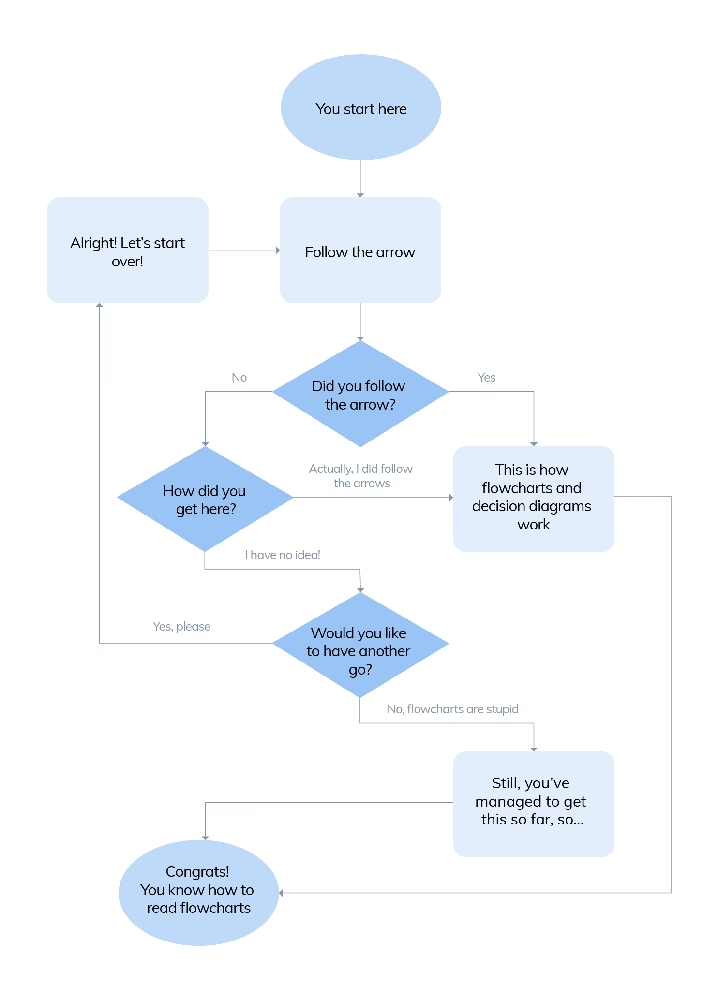
Advantages of Rule-Based Chatbots (Pros)
AI chatbots might be growing rapidly, but rule-based chatbots remain incredibly popular, and for good reason:
1. Easy and Fast Implementation
Rule-based chatbots are easier to implement because their logic is straightforward. Many platforms today provide visual editors that allow you to literally draw conversation paths.
A basic chatbot can be up and running for a small business within a day.
2. Cost-Effective
Compared to AI chatbots, rule-based chatbots are much more cost-effective due to the fact that they don’t need lots of computing power and data.
There are free or very affordable chatbot builders that let you create rule-based flows, which can greatly reduce your support tickets for repetitive queries.
3. Full Control Over Responses
You dictate exactly what it says and how it behaves. This can be very important for brands concerned about tone and accuracy.
There’s no risk of the bot going off-script or saying something it shouldn’t (which can happen with AI bots occasionally).
4. Reliability and Security
Because rule-based bots operate on fixed flows, they’re less prone to weird errors. Like generating bizarre answers or suddenly stopping working because the AI model glitched.
And typically these bots run on your own servers or a trusted service, and they aren’t sending customer data to an external AI engine for processing.
5. Great for Automating Frequent Tasks
A rule-based chatbot is highly recommended for FAQs and routine tasks.
It excels at answering questions or automating tasks like:
- Business hours
- Checking order status
- Resetting passwords
- Scheduling appointments
- Basic troubleshooting, E.g. Have you tried turning it off and on?
6. Speed for the User
Because everything is pre-programmed, the bot’s responses are instantaneous and transaction-like. There’s no pondering or processing delay (beyond maybe calling an API for info).
Users click a button or send a keyword and get an answer immediately.
7. Integrations
Rule-based bots can be set up to perform specific actions or fetch data by integrating with your databases or systems via APIs.
For example, a bot can be scripted: if the user clicks ‘Order Status’ → call our order database API with their email → return the status.
This kind of straightforward integration is often easier to implement.
Limitations of Rule-Based Chatbots (Cons)
Alright, rule-based bots have a lot going for them, but they’re not without drawbacks. It’s important to know these limitations so you can decide if a rule-based solution will truly meet your needs or if you’ll hit a ceiling.
Here are the main cons or challenges with rule-based chatbots:
1. Limited Understanding (No Flexibility)
The biggest limitation is narrow scope. A rule-based chatbot can’t think outside the script.
If the query doesn’t exactly match one of the bot’s predefined triggers or flows, the bot cannot handle it. It struggles to answer questions that haven’t been predicted by the designer.
2. Robotic, Not Conversational
Rule-based bots ask very formulaic questions or offer very stiff response options. This doesn’t feel natural to talk with.
Users can easily tell when they’re talking to a dumb bot, and if the conversation requires empathy or complex decision-making, the experience can be unsatisfying.
3. No Learning or Adaptation
Rule-based chatbot does not improve on its own. If it gets 1000 chats today, it will handle the 1001st chat exactly the same.
There’s no mechanism for it to learn from mistakes or from new trends in customer queries compared to AI chatbots. Which required ongoing manual effort to keep it effective.
4. Doesn’t Handle Errors or Ambiguity Well
Human conversations are messy. People make typos, ask vague questions, or provide information in unexpected order.
Rule-based bots are typically poor at handling these situations.
5. Hard to Scale for Complex Needs
The more you customize what your bot does, the more complicated the rules become. This can quickly become unmanageable.
Imagine a large organization with dozens of products or services building a comprehensive, rule-based chatbot to cover all bases. Managing all of these rules could be a nightmare.
6. Frustrating User Experience (if not designed well)
If the bot’s menu doesn’t include what the user needs, they hit a dead-end.
If the bot forces users to go through too many steps (“First, choose your issue category” → “Now, choose specific issue” → “Now, choose sub-issue…” ad nauseam), users may get annoyed, especially if a human could’ve solved it in one question.
7. Maintenance Overhead for Changing Information
If your answers change frequently, a rule-based bot might become a pain to maintain. Someone has to continuously update its hardcoded responses.
All that said, these limitations aren’t deal-breakers if your use case is appropriate for a rule-based bot. The trick is to design within its limits.
Rule-Based Chatbot Examples
Here are few examples of rule-based chatbots to illustrate how they’re used:
1. eCommerce Support Bot
Many online stores have a little chat bubble that pops up saying “Hi! I’m here to help with orders, returns, or FAQs.”
Often, these are rule-based bots.

For example, H&M’s virtual assistant on their website historically was a rule-based chatbot that let you pick what you needed help with (order tracking, product info, etc.)
By clicking options. It could answer “Where is my order?” by prompting you for your order number and then giving status.
Ask it something outside the script, like “Do you have summer dresses in blue?” and it would likely redirect you to search on the site or say it can’t help.
2. Airline FAQ and Self-Service
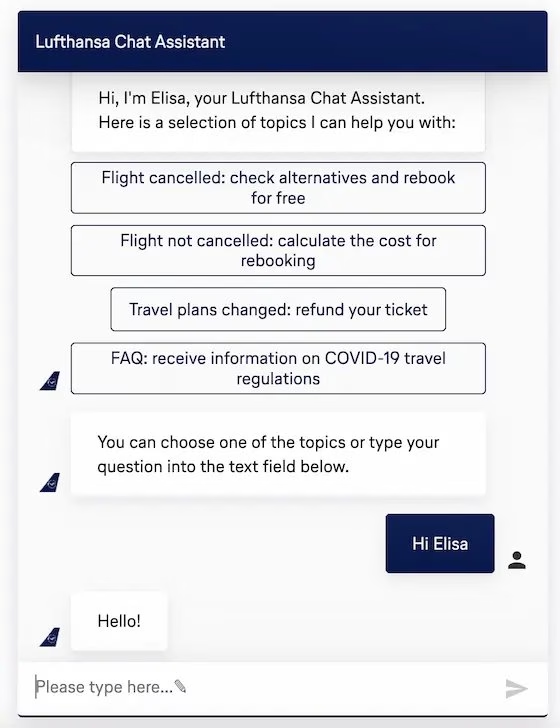
Lufthansa’s Elisa, a bot that helps with flight cancellations, rebooking, refunds, and COVID-19 travel info.
Elisa is a rule-based bot that presents users with categories and guides them through the necessary steps, and is very efficient at that.
Many airlines started with rule-based chatbots to handle common issues, and they often escalate to a live agent if the bot can’t assist.
Customers can get immediate help on basic things like checking refund status without waiting on hold.
3. Banking Assistant
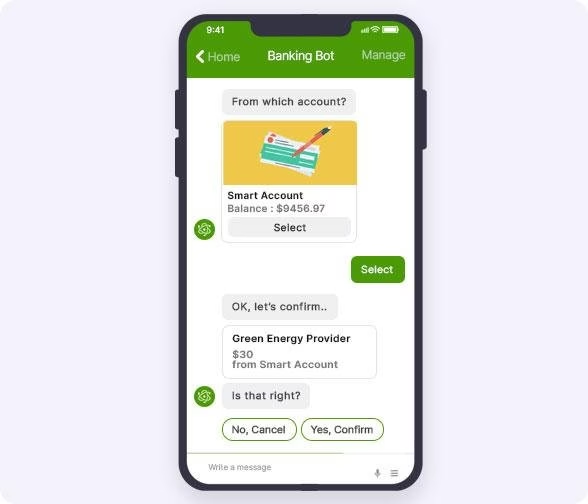
Many banks use chatbots to answer FAQs or automate repetitive customer service tasks (such as creating new accounts).
Which basically work on rule-based models. Users select from predefined options, and the chat progresses forward.
Anything related to verification or complexity is passed to humans.
4. Restaurant Reservation Bot
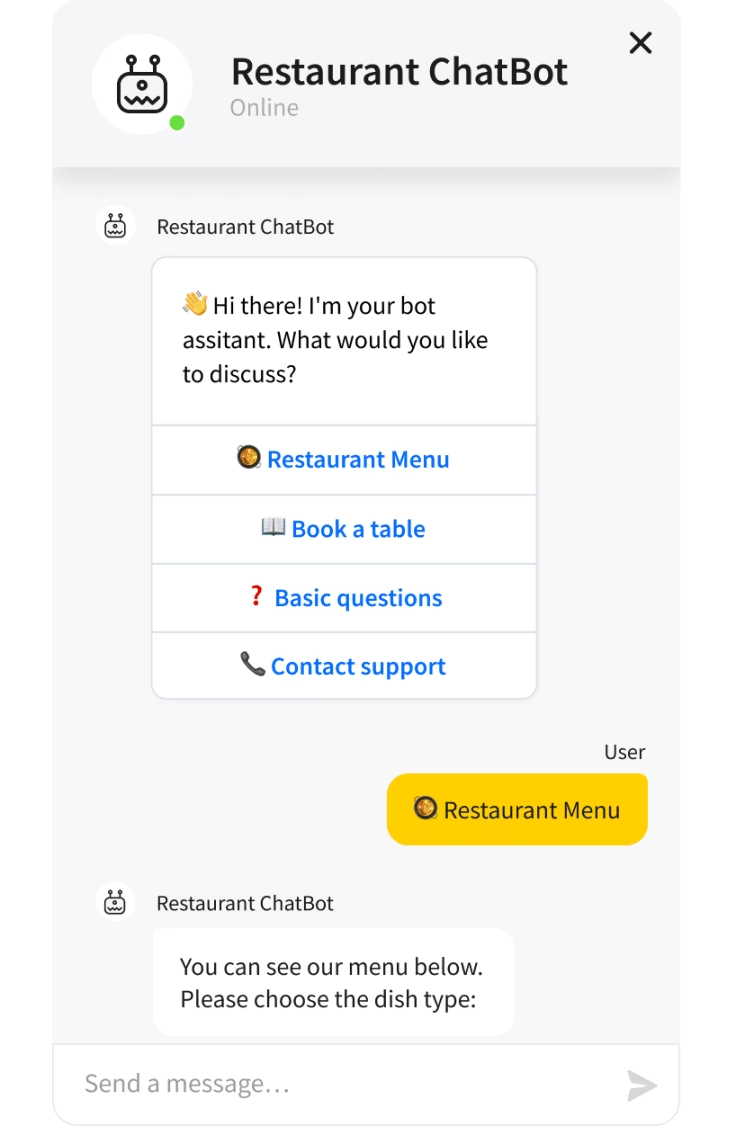
Similar to the banking industry, small restaurants can also use rule-based chatbots to automate customer service tasks. For example:
- To answer frequent questions like, “business hours”
- Table booking and cancellation
- Connecting customers with support team
- Restaurant menu
It’s basically a replacement for a web form, but done in chat. It’s convenient for the user and saves the restaurant from manually responding to the same questions over and over.
5. Lead Generation Chatbot
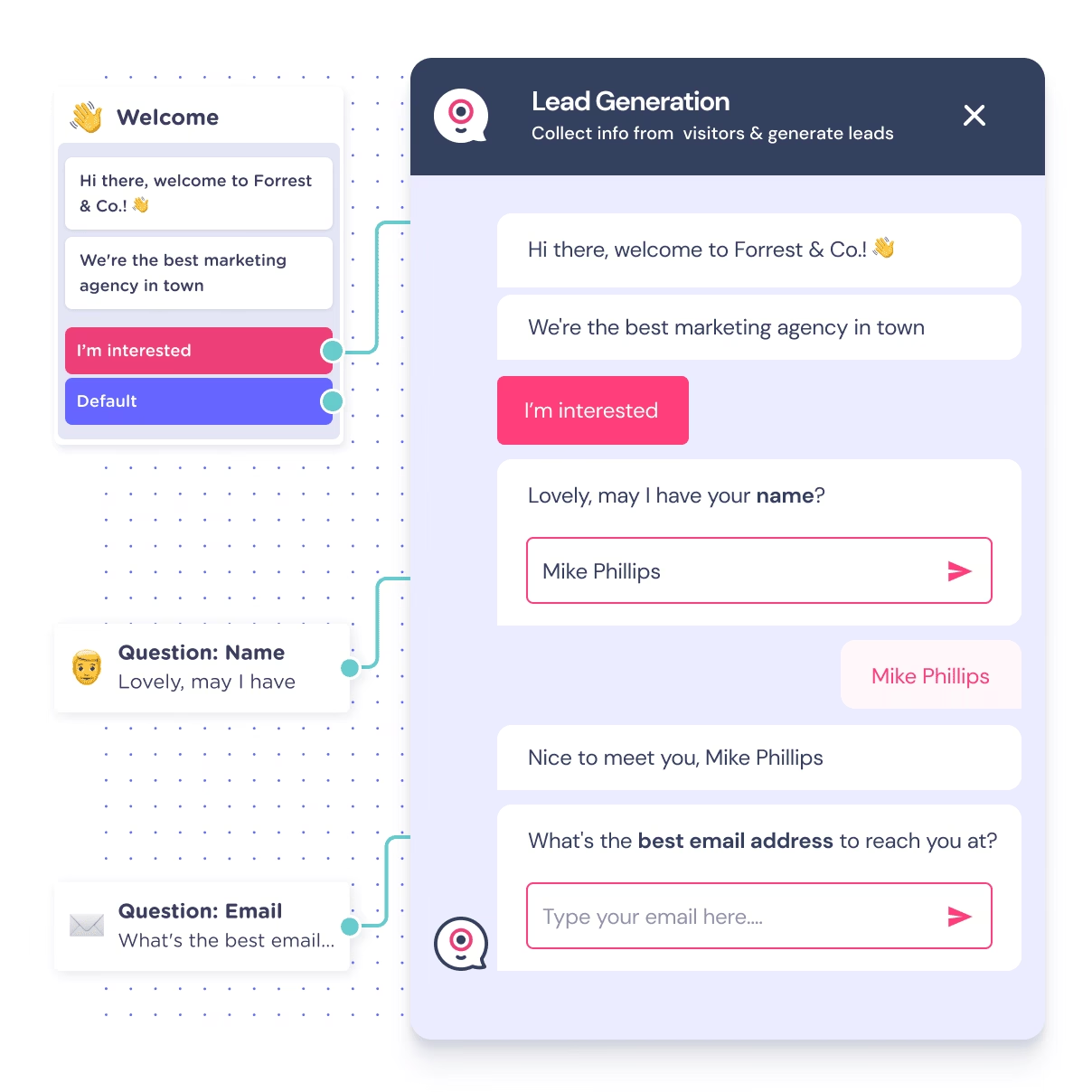
A lot of marketing websites use bots that pop up and qualify leads.
If you are a B2B software site, you might use a chatbot that asks, “Welcome! Interested in our software? Can I ask a few questions to get you the right info?”
After a user response it will simply follow the predefined flow to collect user information.
This works better than showing multiple popups that destroy the user experience and make them leave your website for good.
6. Internal HR or IT Helpdesk Chatbot
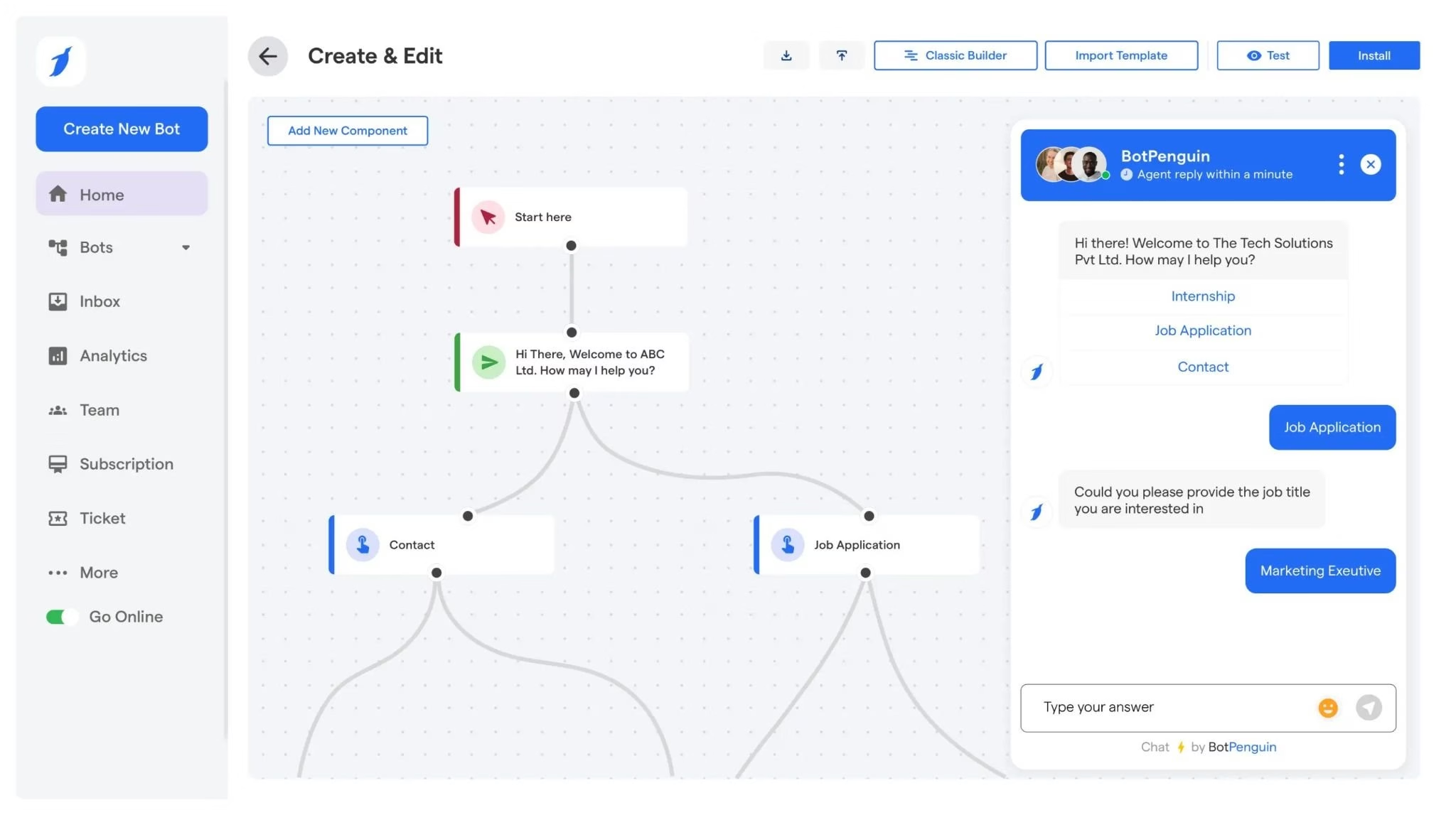
Chatbots can be deployed internally to help employees with common requests.
For example, an IT help bot that employees can message on Slack, and ask for a specific document.
These internal bots often stick to rule-based logic because the scope is limited and well-known.
Similarly, an HR could use a chatbot to answer questions about leave policy, or benefits.
The advantage internally is that it’s available 24/7 for employees in different time zones and takes load off the HR or IT staff for routine stuff.
The bottom line is: the rule-based chatbots are everywhere once you recognize the pattern.
Types of Chatbots: Rule-Based vs AI-Powered
Key differences between rule-based chatbots and AI chatbots:
| Aspect | Rule-Based Chatbot | AI-Powered Chatbot |
|---|---|---|
| Approach | Predefined rules and decision trees. Designed to only handle scenarios anticipated by designers. | Machine learning and NLP algorithms. Designed to understand user intent and context to generate responses. |
| Learning Ability | No self-learning. Doesn’t improve unless humans update the script. Remains static over time. | Learn from data. Can improve with more training examples and interactions, refining its responses over time. |
| Understanding Input | Keyword matching or button selection. Limited understanding of natural language. | Natural Language Processing to parse user input. Can handle synonyms, typos, and free-form questions by grasping user intent. |
| Conversation Flow | Linear and predefined. Feels like a structured script or IVR menu. | Dynamic and context-aware. Can handle multi-turn dialogues, recall context, and shift topics more naturally. |
| Response Flexibility | Fixed responses based on pre-written content and templates. | Generative responses that are fetched from a knowledge base on the fly with variety in phrasing. |
| Setup and Cost | Quick setup with no coding in many cases. Cheaper to build. | Requires more setup time and possibly technical expertise. Higher upfront cost (Content, development or subscription to AI platform). |
| Best for | Simple FAQs or forms. | Complex tasks or large query variety |
| Maintenance | Easy maintenance | Ongoing training/tuning may be needed. |
| Scalability of Answers | Limited. Struggles with questions it wasn’t explicitly programmed for and hard to cover every possible phrasing users might use. | Broad. In theory, it can answer infinite variations if it has been trained on the domain. |
| User Experience | Predictable and transparent. | Conversational and natural. |
| Handling Unknowns | Usually falls back to a polite apology or repeats the menu. Often configured to escalate to human support if it can’t help. | It may attempt to answer unfamiliar questions. It can also be configured to transfer to human support when necessary. |
Final Thoughts
Rule-based chatbots may not be glamorous or headline-grabbing in the AI age, but they remain a practical, reliable tool in the customer support and user engagement toolbox.
I will recommend to start with the basics and only move to AI when/if the rule-based approach truly can’t meet your needs.
Users don’t care whether it’s AI or rules—they care about getting help.
If your rule-based chatbot solves their problem quickly, they’ll walk away satisfied.
Good luck, and happy bot building!

